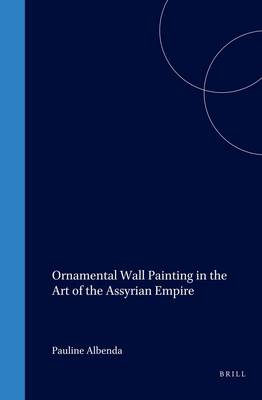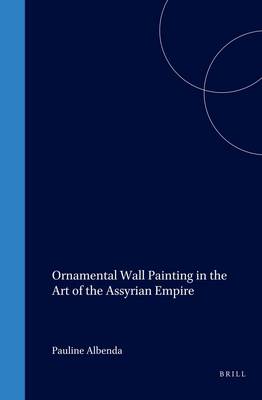
- Afhalen na 1 uur in een winkel met voorraad
- Gratis thuislevering in België vanaf € 30
- Ruim aanbod met 7 miljoen producten
- Afhalen na 1 uur in een winkel met voorraad
- Gratis thuislevering in België vanaf € 30
- Ruim aanbod met 7 miljoen producten
Zoeken
Omschrijving
This study brings together the archaeological record and the pictorial documentation of ornamental wall painting produced in Assyria, from the thirteenth to the seventh centuries B.C. Nimrud, Khorsabad, Til Barsip, and Tell Sheikh Hamad, are among the ancient sites where impressive wall paintings were discovered; unfortunately most of these discoveries now exist in drawings and photographs only.
Ornamental wall painting created a colorful and meaningful visual impact to the rooms of residences belonging to the Assyrian kings. The assembled material demonstrates that the polychrome and black-and-white decorated bands of geometric, floral, figural, and animal motifs were arranged into a variety of formulaic designs. Particular attention is given to the changing trends in the selection and combination of motifs, some of which had symbolic meaning. The chronology of the wall paintings at Til Barsip and the accompanying discussion of textile patterns are of special interest to the art historian. This book illustrates the ornamental wall paintings as recorded in the excavation reports.
Ornamental wall painting created a colorful and meaningful visual impact to the rooms of residences belonging to the Assyrian kings. The assembled material demonstrates that the polychrome and black-and-white decorated bands of geometric, floral, figural, and animal motifs were arranged into a variety of formulaic designs. Particular attention is given to the changing trends in the selection and combination of motifs, some of which had symbolic meaning. The chronology of the wall paintings at Til Barsip and the accompanying discussion of textile patterns are of special interest to the art historian. This book illustrates the ornamental wall paintings as recorded in the excavation reports.
Specificaties
Betrokkenen
- Auteur(s):
- Uitgeverij:
Inhoud
- Aantal bladzijden:
- 148
- Taal:
- Engels
- Reeks:
- Reeksnummer:
- nr. 28
Eigenschappen
- Productcode (EAN):
- 9789004141544
- Verschijningsdatum:
- 29/11/2004
- Uitvoering:
- Hardcover
- Formaat:
- Genaaid
- Afmetingen:
- 171 mm x 245 mm
- Gewicht:
- 526 g

Alleen bij Standaard Boekhandel
+ 567 punten op je klantenkaart van Standaard Boekhandel
Beoordelingen
We publiceren alleen reviews die voldoen aan de voorwaarden voor reviews. Bekijk onze voorwaarden voor reviews.











